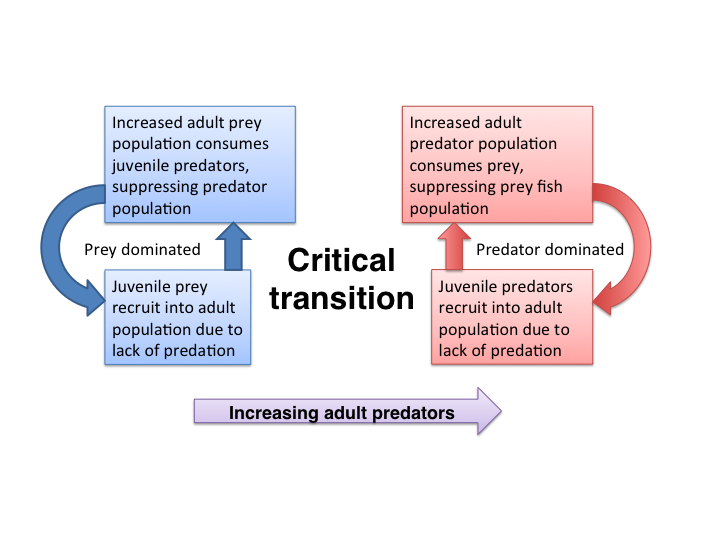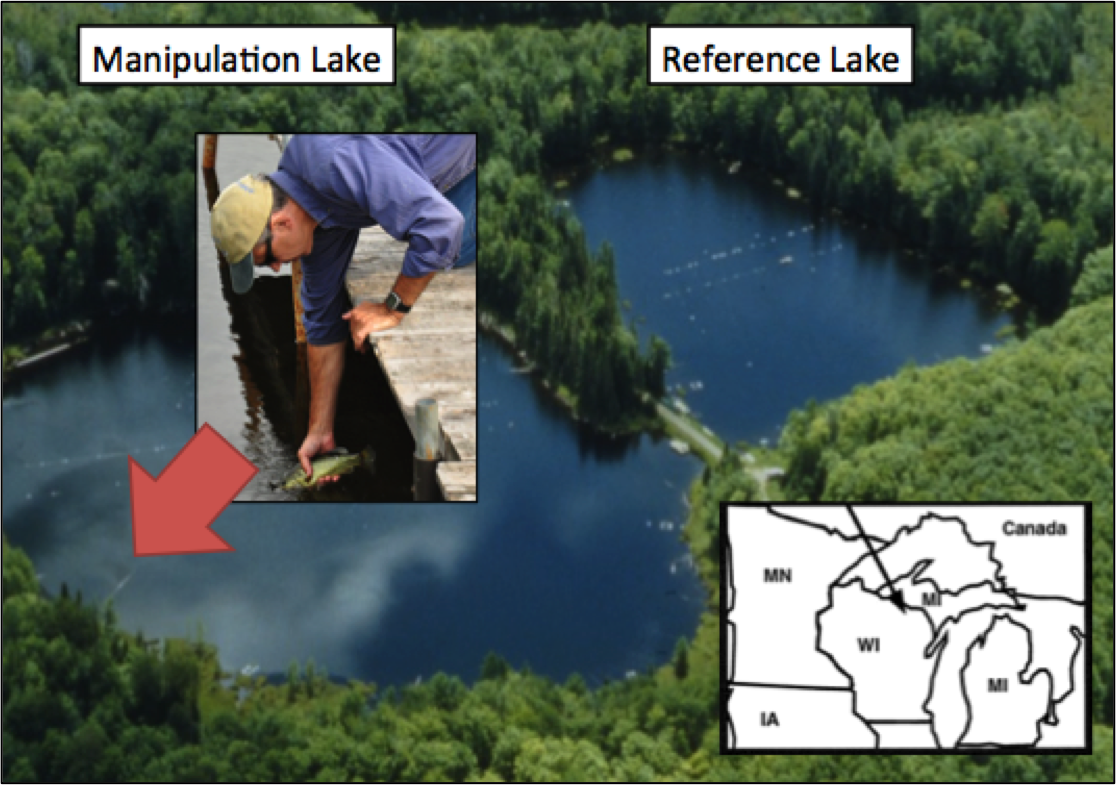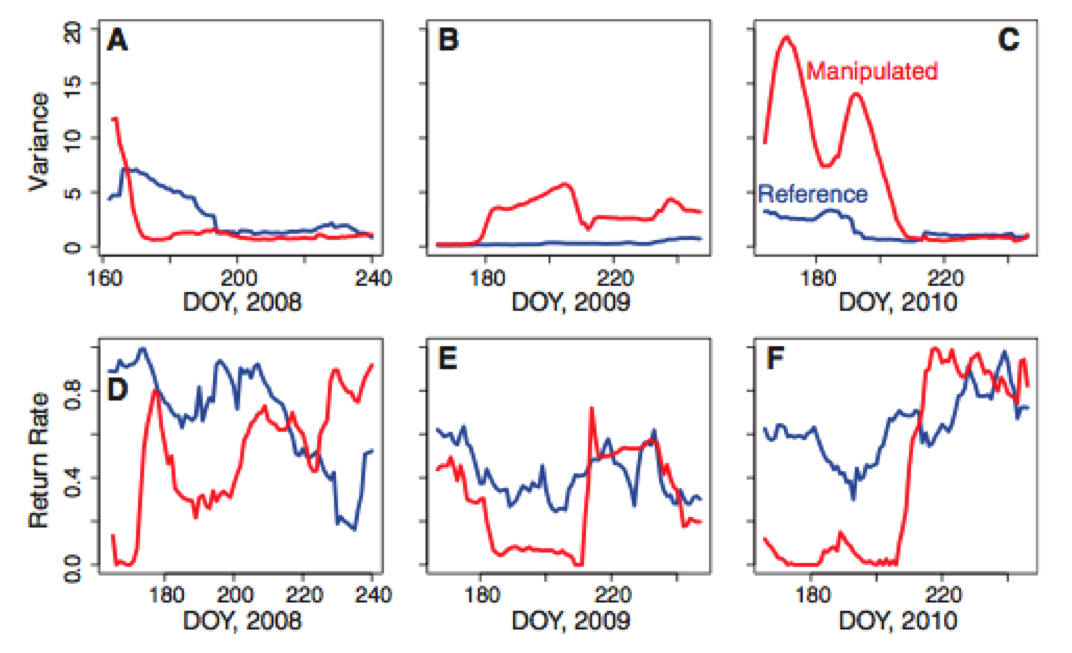1
Predator fish and prey fish can exhibit a predator–dynamic known as a trophic triangle, where positive feedbacks can drive either the predator or the prey to dominance. Adult predators eat prey fish. However, prey fish can eat juvenile predators and outcompete them. Hence, large numbers of prey fish can prevent the growth and survival of young predators thereby preventing young predators from reaching adulthood. However, if the adult predator population grows large enough, the predator–prey relationship passes a tipping point where adult predators eat so many prey fish that young predators are able to grow and reach adulthood (fig 1). The numbers of adult predators then explodes as the number of prey fish plummets.

2
Carpenter et al. (2011) studied two lakes in the Upper Peninsula of Michigan (USA) to test the efficacy of early warning indicators at the ecosystem scale (fig 2). One lake was used as a reference system and the other lake was used for the manipulation. The fish communities in each lake consisted of largemouth bass (predators) and a variety of minnows (prey), but prior to the study the reference system was dominated largemouth bass while prey dominated the manipulation system. The researchers slowly added adult largemouth bass to the manipulation lake over the course of several summers in order to transition the food web from prey dominance to predator dominance. They measured a variety of ecosystem parameters daily and applied early warning statistics to the resulting time series.

3
The manipulation system transitioned from prey to predator dominance around day 200 of 2010. Variance increased in the manipulation system prior to the transition (fig 3 panels A-C) and return rate from perturbation decreased (fig 3 panels D-F). The patterns and variability in these metrics were consistent with expectations drawn from computer simulations. The reference system did not respond with the same early warnings. The experiment serves as a proof-of-concept that early warning signals can be observed at the ecosystem scale.
